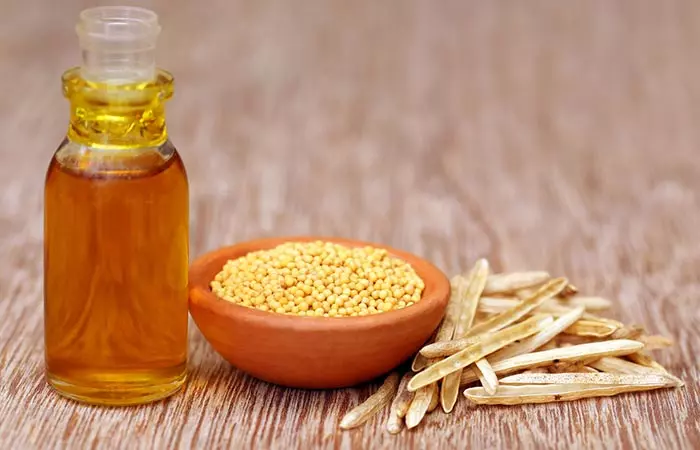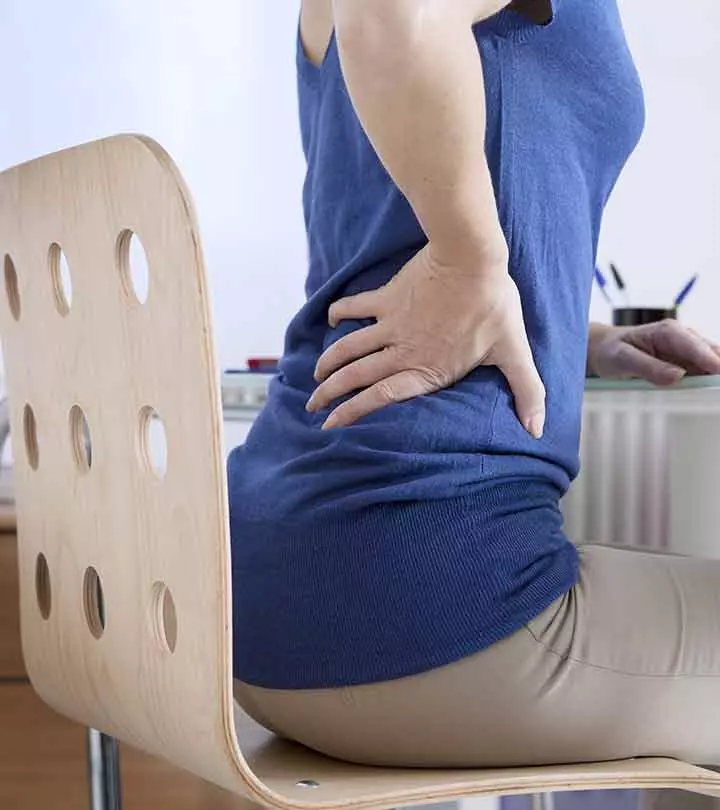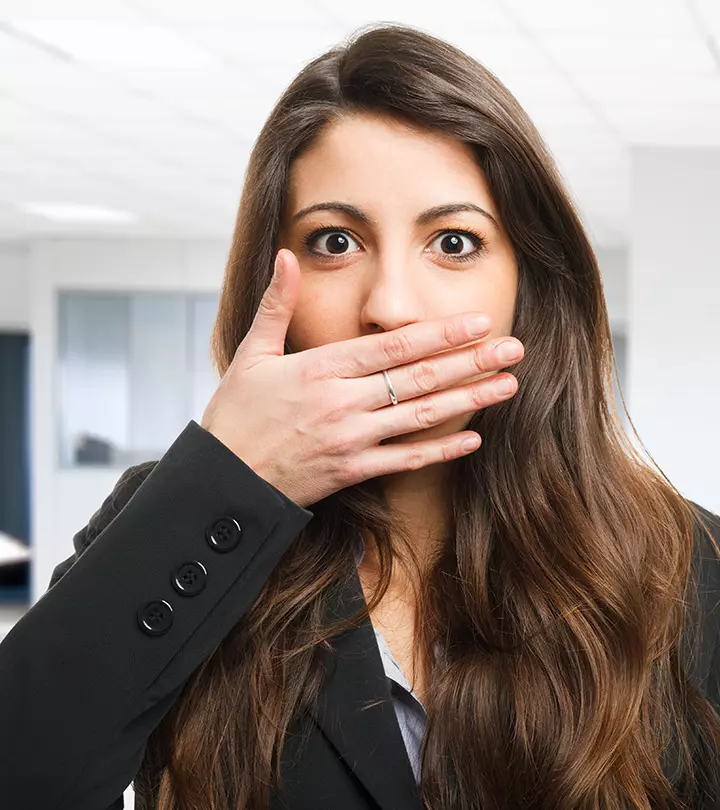8 Amazing Home Remedies For Foot Lumps & Prevention Tips
Get a deeper insight into why these lumps develop and the various ways to treat them.

Image: shutterstock
Our feet do so much work as they carry our weight around and help us get from one point to the other. Hence, it is always challenging to have pain and discomfort in the feet. For example, foot lumps can make daily tasks and regular moving around a tough task, and the worst part is that they can be pretty stubborn and refuse to go away quickly. Thankfully, there are several home remedies to treat foot lumps that you can use. What remedies work and what don’t will likely depend on the exact cause behind the foot lump.
In this article, we talk about some of the most likely causes of a foot lump, as well as some of the most effective remedies that can help you deal with it well and truly.
Why Do I Have A Lump On My Foot?
Foot lumps, bumps, or growth are usually a localized swelling akin to cysts, masses, or nodules, and may be caused due to inflammation, infection, trauma, or tumors. Lumps can be painless or painful and of numerous types depending on the cause. Some of these types include ganglion cysts (fluid-filled sacs that typically form around tendons or joints) and neuromas (benign tumors that arise from nerves). Other types include lipoma, a soft lump that is generally harmless, and plantar fibromatosis, a lump formed by thickening of the tissue on the sole of the foot (1). Only If the lump on your foot is painless, you can follow the simple remedies mentioned in this article. But if there is pain and the lump size increases, go see your doctor immediately.
Below are some simple remedies for treating lumps on your foot.
In This Article
Home Remedies To Treat Foot Lumps
Key Takeaways
- Soaking the feet in cold and hot water alternatively for 10 minutes helps reduce swelling and improve blood circulation.
- An Epsom salt soak with ¼ cup salt and warm water may help reduce inflammation and release toxins.
- Massaging the foot with 2-3 drops of clove oil in 1 tablespoon of olive oil can help improve blood circulation.
- Applying an ice pack on the affected area 2-3 times a day can relieve swelling and pain.
Get Rid Of Foot Lumps With These Remedies
1. Cold And Hot Water

You Will Need
- Hot water
- Cold water
- 2 buckets
What You Have To Do
- Pour hot and cold water in two different buckets.
- First, soak your feet in cold water for about 10 minutes. Then, soak them in hot water for another 10 minutes.
How Often You Should Do This
Repeat this the next day if required.
Why This Works
Using cold and hot water alternately improves the circulation of blood in the feet
. This will decrease the swelling and treat the lumps on the foot (2).
2. Epsom Salt For Foot Lump

You Will Need
- 1/4 cup Epsom salt
- Warm water
- A tub or a bucket
What You Have To Do
- Fill the tub with enough water to soak your feet.
- Add the salt to it and mix well.
- Soak your feet in this for about 15 minutes.
How Often You Should Do This
Use this homemade foot soak recipe once every day until the lump goes away.
Why This Works
Epsom salt will reduce the pain and the swelling as it is anti-inflammatory.
It detoxifies the body and may eliminate any toxins that may be causing the lumps on your feet (3).
 Quick Tip
Quick Tip3. Vinegar To Reduce Lumps

You Will Need
- ½ cup vinegar or apple cider vinegar
- A bucket of water
What You Have To Do
- Add the vinegar to the water and soak your feet in this for 10-15 minutes.
- Rinse your feet with plain water and apply a moisturizer.
You can also drink a teaspoon of apple cider vinegar diluted in a glass of water to speed up the healing process of the lump.
How Often You Should Do This
Repeat this every day until you get relief.
Why This Works
Foot lumps may be effectively treated with vinegar as it has anti-inflammatory properties
(4).
4. Clove Oil

You Will Need
- 2-3 drops clove oil
- 1 teaspoon coconut oil or olive oil
What You Have To Do
- Mix the two oils and massage the affected foot with this blend.
- Leave it on overnight.
How Often You Should Do This
Do this every night before going to bed.
Why This Works
Massaging the affected foot with clove oil will help reduce inflammation, improve blood circulation, and provide relief from the pain (5).
5. Ice

You Will Need
An ice pack
What You Have To Do
Simply place the ice pack on the affected area for 10-12 minutes.
How Often You Should Do This
Do this 2-3 times in a day.
Why This Works
Ice is an age-old trusted recipe among the home remedies for swollen feet. Along with swelling, many athletes also use it to treat pain and blisters (6). It can help reduce the lump on your foot as well.
6. Cayenne Pepper

You Will Need
- 1 tablespoon cayenne pepper powder
- Water
- Bandage
What You Have To Do
- Make a thick paste by adding some water to the cayenne pepper powder.
- Apply this on the lump and cover with the bandage.
- Leave this on overnight.
How Often You Should Do This
Repeat for a few nights to get relief from the foot lump.
Why This Works
Capsaicin, found in cayenne pepper, is an effective ingredient that reduces all kinds of inflammation. It decreases the swelling and inflammation by decreasing the pro-inflammatory compounds in the skin (7). Due to this, cayenne pepper may also be used as one of the effective remedies for foot pain that comes with swelling.
7. Mustard Oil

You Will Need
- 1-2 tablespoons mustard oil
- Socks
What You Have To Do
- Warm up the oil and massage the affected foot with it.
- Cover the foot with a sock and leave the oil on overnight.
How Often You Should Do This
Repeat this every night. This can also be done again during the day.
Why This Works
Mustard oil reduces external as well as internal swelling (8).
 Quick Tip
Quick Tip8. Turmeric

Ingredients
- 1 tablespoon of turmeric powder
- Water
What You Have To Do
- Mix turmeric powder with water to make a paste. If possible, use fresh turmeric powder.
- Ensure the paste is thick enough to stay put on your skin without dripping.
- Apply the mix to the affected area.
- Cover it with a bandage to keep your clothes from getting stained.
How Often You Should Do This
Repeat this every night to get relief from the foot lump.
Why This Works
Curcumin, the active component present in turmeric, may reduce inflammation and pain (9), (10). It may help reduce the lump on your foot as well. However, be cautious as turmeric may cause skin irritation in some individuals. Always perform a patch test to ensure your skin is not sensitive to turmeric before use.
These remedies work at improving circulation to the affected site, which allows the body to treat the lump by itself. A few repetitions of any of these remedies will definitely give you relief from the foot lump. However, if they do not work, you will need to visit a doctor. Learn more about it in the next section.
Diagnosis And When To Seek Help For Foot Lumps
You must visit a doctor if you experience the following symptoms even after using the home remedies mentioned above:
- Persistent pain
- Increased lump size
- Change in color
- Pus formation
- Swelling
- Formation of new lumps
- Fever
Your doctor may ask you about your symptoms and medical history to make a proper diagnosis. They will conduct a physical exam and may suggest an MRI to ensure that the lump is not cancerous.
Some other tips should be kept in mind even after the lump is gone to prevent them from developing in the future. These tips are listed out below.
Tips To Prevent Lumps On Foot
A. Exercise Your Foot
Moderate exercise is the key to good health. There is no such ailment that needs you to refrain from mild or moderate exercising. Many the foot needs only a little exercise to get better. Try simple toe stretching exercises.
B. Use The Right Shoes
Sometimes, the problem is not due to any stress, but due to wearing the wrong shoes. To get relief, wear shoes that allow your feet to breathe and relax. We often make the mistake of opting for shoes that end up squishing our toes or the area below it. Make sure that any shoe you purchase fits you well without creating pressure on any part of your foot.
C. Walk Barefoot
There are many simple ways to let your feet be comfortable, and one of them is to let them be free. Try walking barefoot on the grass for a few minutes each day to relax them.
D. Use Shoe Inserts
One of the most effective ways of treating foot lumps is to use foot inserts. The problem of ill-fitting shoes can be easily fixed with a shoe insert. This will also prevent the formation of lumps.
E. Opt For Regular Check-Ups
If you have experienced foot lumps in the past, it is important to go for regular foot check-ups. This will ensure timely treatment in case a new lump develops and prevents potential complications.
Infographic: Best Exercises To Prevent Foot Lumps
Factors like inflammation, infection, and injury may cause foot lumps. The good news is you can follow easy home remedies to provide relief. Additionally, we have compiled a list of exercises that can help keep your feet strong, flexible, mobile, and healthy. Check out the infographic below to know more! Illustration: StyleCraze Design Team
A foot lump is a localized swelling that may be caused due to an injury, trauma, infection, inflammation, or a tumor. Some foot lumps are painful, while others are painful. The home remedies discussed in this article may be effective for painless lumps and include the use of natural and readily available ingredients like vinegar, clove oil, ice cubes, mustard oil, warm water, and cayenne pepper. If you experience severe pain and notice the lumps increasing in size over time instead of going away, consult your healthcare provider immediately as it may indicate underlying health concerns.
Frequently Asked Questions
What types lumps grow on the bottom of the foot?
Fibromas are commonly seen on the bottom of the foot. These hard lumps under the skin are made of fibrous connective tissue and are benign.
What kind of doctor treats lumps on the bottom of foot?
A podiatrist is a specialist who deals with foot and ankle problems. He/She can be consulted for foot lumps as well.
Can foot lumps be cancerous?
While malignant foot tumors are rare, it is estimated that malignant bone tumors of the foot make up 25% of all bone tumors (10).
The simple remedies given in this article can go a long way in treating foot lumps effectively at home. If it gets worse, both size and pain-wise, you can visit a doctor and consult him/her for further course of action.
Try these remedies and share your feedback with us in the comments section below.
Illustration: Amazing Home Remedies For Foot Lumps & Prevention Tips

Image: Stable Diffusion/StyleCraze Design Team
Learn everything about foot and ankle ganglion cysts in this comprehensive video. Gain essential knowledge and insights on their causes and how to manage this condition effectively. Check it out now!
References
Articles on StyleCraze are backed by verified information from peer-reviewed and academic research papers, reputed organizations, research institutions, and medical associations to ensure accuracy and relevance. Read our editorial policy to learn more.
- The differential diagnosis of foot lumps: 101 cases treated surgically in North Glasgow over 4 years
https://pmc.ncbi.nlm.nih.gov/articles/PMC1964714/ - Effect of cold and heat therapies on pain relief in patients with delayed onset muscle soreness: a network meta-analysis
https://pmc.ncbi.nlm.nih.gov/articles/PMC8862647/ - The use of Epsom salts
historically considered - Anti-obesity and anti-inflammatory effects of synthetic acetic acid vinegar and Nipa vinegar on high-fat-diet-induced obese mice
https://pmc.ncbi.nlm.nih.gov/articles/PMC5532206/ - Clove (Syzygium aromaticum): a precious spice
https://pmc.ncbi.nlm.nih.gov/articles/PMC3819475/ - Ice reduces edema. A study of microvascular permeability in rats
https://pubmed.ncbi.nlm.nih.gov/12208913/ - Capsaicin may have important potential for promoting vascular and metabolic health
https://pmc.ncbi.nlm.nih.gov/articles/PMC4477151/ - The uses of mustard in medicine
https://pmc.ncbi.nlm.nih.gov/articles/PMC5231598/pdf/indmedgaz72170-0043.pdf - Curcumin: A review of its effects on human health
https://pmc.ncbi.nlm.nih.gov/articles/PMC5664031/ - The efficacy of high- and low-dose curcumin in knee osteoarthritis: A systematic review and meta-analysis
https://www.sciencedirect.com/science/article/pii/S0965229921001163
Read full bio of Caroline Duncan
Read full bio of Kushneet Kukreja
Read full bio of Ramona Sinha
Read full bio of Monomita Chakraborty


























Community Experiences
Join the conversation and become a part of our empowering community! Share your stories, experiences, and insights to connect with other beauty, lifestyle, and health enthusiasts.